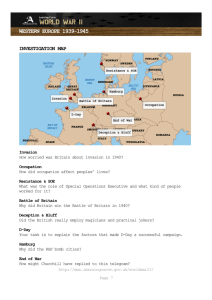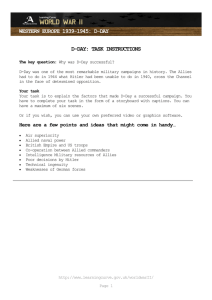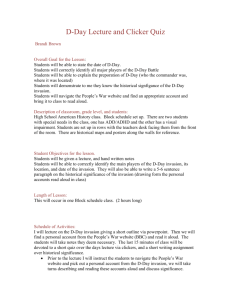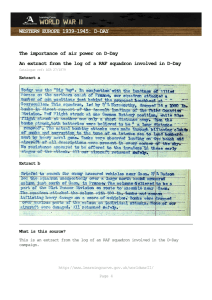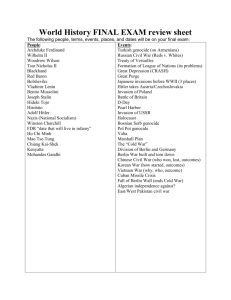WESTERN EUROPE 1939-1945: D-DAY
advertisement
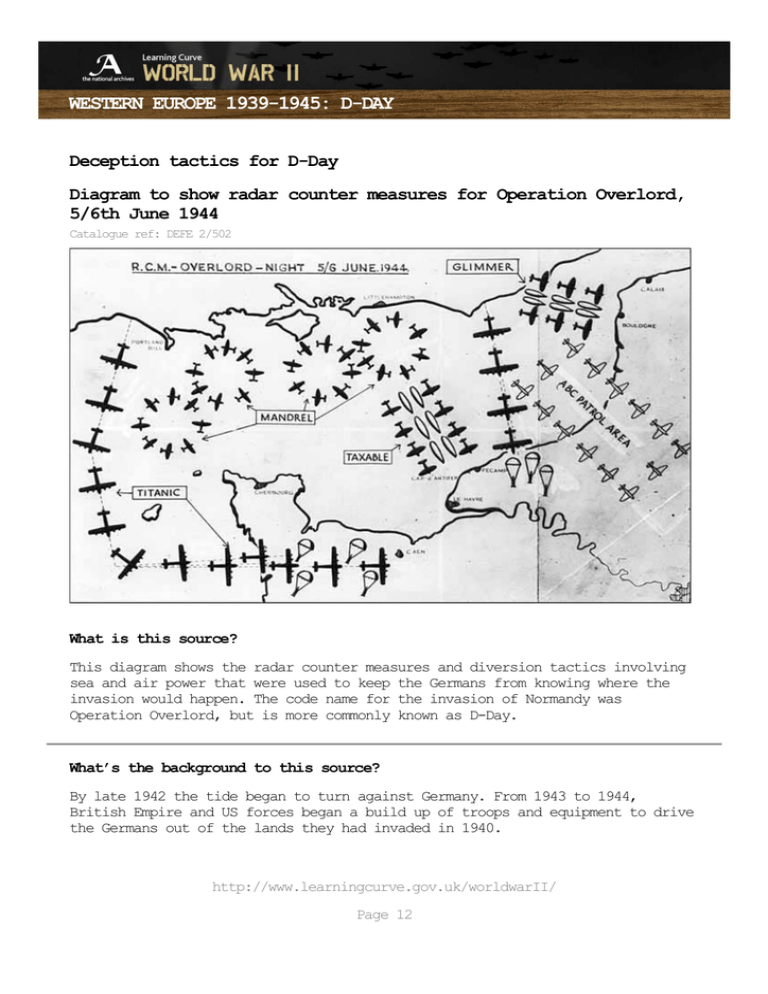
WESTERN EUROPE 1939-1945: D-DAY Deception tactics for D-Day Diagram to show radar counter measures for Operation Overlord, 5/6th June 1944 Catalogue ref: DEFE 2/502 What is this source? This diagram shows the radar counter measures and diversion tactics involving sea and air power that were used to keep the Germans from knowing where the invasion would happen. The code name for the invasion of Normandy was Operation Overlord, but is more commonly known as D-Day. What’s the background to this source? By late 1942 the tide began to turn against Germany. From 1943 to 1944, British Empire and US forces began a build up of troops and equipment to drive the Germans out of the lands they had invaded in 1940. http://www.learningcurve.gov.uk/worldwarII/ Page 12 WESTERN EUROPE 1939-1945: D-DAY German naval forces and aircraft closely watched the Allies’ preparations. It was simply not possible to hide a force as large as the D-Day invasion force but the Allies did try very hard to keep the Germans guessing about exactly where the invasion would take place in order to make them delay their movement of troops to meet the invasion. It’s worth knowing that... As part of the planning for D-Day, the Navy carried out various diversions. These diversions were supported by air operations and did not involve the landing of troops. These operations, along with radar counter measures (named in this source diagram), were carried out at the same time as the actual landings. Operation Taxable: No. 617 Air Squadron dropped strips of tin foil known as “chaff” (to interfere with German radar signals) together with a Royal Navy deception operation, to represent an invasion convoy approaching the coast at Cap d’Antifer. Operation Glimmer: No. 218 Squadron carried out a similar “chaff” dropping exercise. A force of six motor launches were also used to simulate an invasion convoy heading for Boulogne in the direction of Pas de Calais. This was designed to make it appear as if the Allies were invading from the shortest crossing point across the Channel. Operation Titanic: A force of 40 aircraft dropped dummy parachutists to make it look like an airborne landing away from planned invasion area. 200 dummy parachutists were dropped south west of Caen and 200 more south west of Dieppe. Dummy parachutists consisted of a series of cloth bags that contained an explosive charge that destroyed the cloth “figure” by setting it on fire. Therefore, it looked as if the man had burnt the parachute and possibly lay hidden, ready for action. Operation Mandrel: Between Littlehampton and Portland Bill more aircraft set up a jamming screen using Mandrel EW radar jammers to hide the real invasion fleet from German radar. http://www.learningcurve.gov.uk/worldwarII/ Page 13 WESTERN EUROPE 1939-1945: D-DAY How does this source help us to understand why D-Day was successful? 1. What does this source tell us about deception tactics and planning for D-Day? 2. Is it possible to say whether the role of the air forces was more or less important than the role of the naval forces on D-Day? • • Will you include this source (or part of it) in your storyboard? If you do use it, what are the main points you will make in your caption? Use the framework to plan your storyboard. http://www.learningcurve.gov.uk/worldwarII/ Page 14
